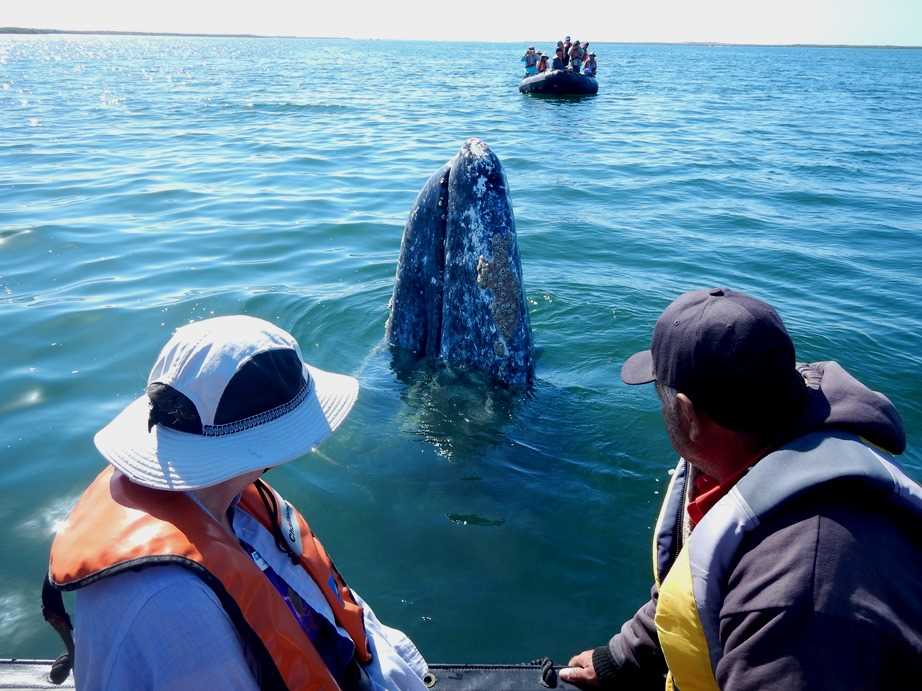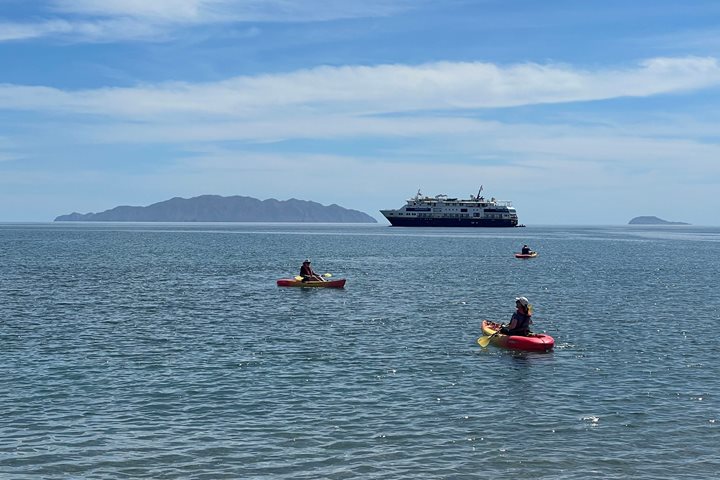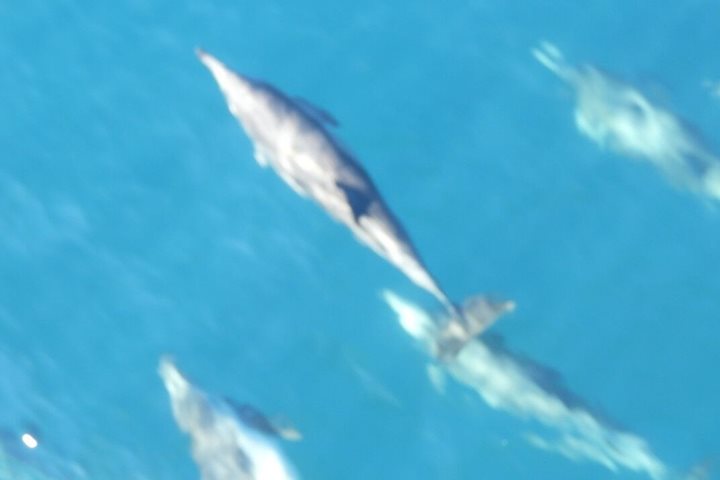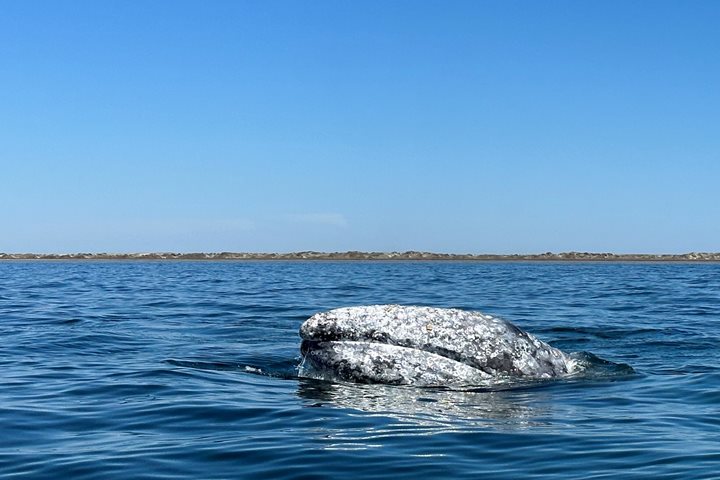Today would be dedicated to getting out in our expedition landing craft to spend time with the California gray whales. Everyone who wanted was out for at least two rounds. There was also a chance to go ashore and explore the sand dunes of Isla Magdalena. The presence of this long barrier island is what creates the shallow protected waterways that the gray whales use to raise their young. The tidal movement forces the females with calves to swim against the strong ebb or flood tide in order that they don’t get sucked out of the bay. This helps to strengthen the calf, because in the month of March these cow/calf pairs will begin the long voyage north towards the feeding grounds in Alaska. The weather was quite calm as we headed out from the ship. There were a few adult “chase groups” in which female whales were being followed by males hoping for a chance to mate. Theses adult groups can swim quite fast and change direction often, so they can be difficult to keep track of. The cow/calf pairs are much more predictable given the small size of the calf and its need to breathe at the surface more often than the females. There were several cow/calf pairs around the ship and our landing craft all day. Many close looks were enjoyed and a few whales even showed curious and then friendly behavior. This behavior began in the 1970s and has led to the thriving whale watching industry that exists today.
- Daily Expedition Reports
- 16 Feb 2017
Magdalena Bay, 2/16/2017, National Geographic Sea Bird
- Aboard the National Geographic Sea Bird
- Baja California
Jason Kelley, Naturalist
Jason grew up traveling with his oceanographer father and biologist mother, both of whom worked with Lindblad Expeditions-National Geographic. This led him to a job as a Zodiac driver while still a teenager. After receiving a degree in geology from...
Read MoreShare Report
Baja California: Among the Great Whales
VIEW ITINERARYRelated Reports
3/21/2025
Read
National Geographic Venture
Canal de Cerralvo / La Paz
We awoke navigating on the Cerralvo Canal, between Cerralvo Island and the peninsula, searching for wildlife. We were not disappointed, as two different pods of common dolphins came to visit and bow ride with us for a long time. After lunch, we anchored at Pichilingue Port and disembarked the vessel to visit the capital city of Baja California Sur, La Paz, where we had the chance to interact with the locals in some of the most popular places, like La Fuente, a traditional ice cream parlor, and the Jardin Velasco in downtown. Then guests enjoyed a fiesta, dinner, and returned on board National Geographic Venture .
3/20/2025
Read
National Geographic Venture
Magdalena Bay
Today we woke with the shining stars and took Zodiacs ashore to meet our coaches for a trip to Chale, a small town on the shores of Magdalena Bay. The goal was to find some wintering gray whales, magnificent leviathans which frequent this coast to give birth before the long migration back to their Arctic feeding grounds. These whales did not disappoint! Spyhopping, breaching, and even a bit of tail flukes. As a result, there were lots of smiles and laughter all around! We returned to the town for lunch and then headed back out on the local boats for a second round. As we returned to the ship, the sun set over La Paz, with glassy waters of gold in the harbor, and pink clouds above. The constellations of Orion, Taurus, and the Pleiades shone over our Zodiacs on our way back to dinner aboard National Geographic Venture .







